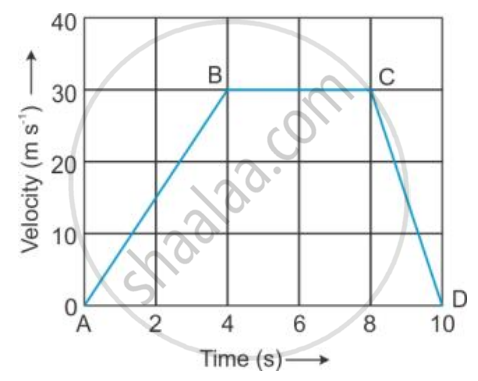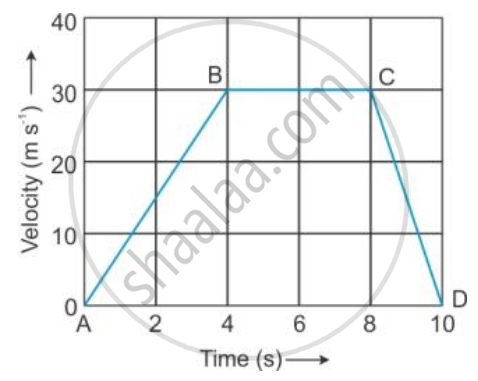Advertisements
Advertisements
प्रश्न
The velocity-time graph of a moving body is given below in Figure

Displacement in each part AB, BC and CD.
उत्तर
Displacement of part AB = Area of ΔAB4 = (1/2) (4) (30)
= 60 m
Displacement of part BC = Area of rectangle 4BC8
= (30) × (4) = 120 m
Displacement of part CD = Area of ΔC8D = (1/2) (2) (30)
= 30 m
APPEARS IN
संबंधित प्रश्न
A motorcyclist drives from place A to B with a uniform speed of 30 km h-1 and returns from place B to A with a uniform speed of 20 km h-1. Find his average speed.
A car is moving along a straight road at a steady speed. It travels 150 m in 5 seconds:
How long does it take to travel 240 m ?
The graph given alongside shows how the speed of a car changes with time:

(i) What is the initial speed of the car ?
(ii) What is the maximum speed attained by the car ?
(iii) Which part of the graph shows zero acceleration ?
(iv) Which part of the graph shows varying retardation ?
(v) Find the distance travelled in first 8 hours.
What do you mean by motion in one direction?
Give one example of following motion :
Uniform velocity
Give one example of following motion :
Variable velocity
A car moving on a straight path covers a distance of 1 km due east in 100 s. What is the speed of the car?
The velocity-time graph of a moving body is given below in Figure

The acceleration in parts AB, BC and CD.
A body moves from rest with uniform acceleration and travels 270 m in 3 s. Find the velocity of the body at 10 s after the start.
Which of the following figures (Fig. 8.3) represents uniform motion of a moving object correctly?
